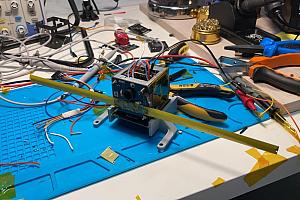Small satellite built by Romanian students successfully reaches orbit

The second Romanian satellite built by students, ROM-3, has reached orbit with a SpaceX rocket and is operational. After a few days to regenerate its energy using solar power, the satellite will begin transmitting data.
The Falcon 9 rocket took off from SpaceX's Vandenberg base on November 11, at 23:35, after three successive flight delays. The capsule containing 35 satellites reached the payload deployment altitude in 9 minutes. At 00:45, it began deploying the satellites into their orbits, in order of size and importance, at well-established time intervals and specific points for each mission.
ROM-3 waited its turn in the deployer for 72 hours, at temperatures ranging from plus 40 to minus 80 degrees Celsius. Concerns about the batteries' ability to withstand an extended time were confirmed, and the deployer did not open on the first attempt. The launcher mechanism from Alba Orbital did not work, and ROM-3 remained stuck inside, alongside the other satellites, as reported by Agerpres.
From that moment, the ground team constantly calculated the battery's potential, which faced cosmic cold beyond the design limit.
“On Monday, November 28, at 11:25, Alba Orbital made the second attempt to open the launcher, and it succeeded. ROM-3 was launched into orbit and is now operational. It has already transmitted the identification data package. After a few days to regenerate its energy using solar power, the satellite will begin transmitting according to the mission,” a statement said.
Currently, ROM-3 is moving at a speed of 27,500 km/h, at an altitude of 540 km, orbiting the planet once every hour and a half.
The Romspace team, which completed the ROM-3 mission, consists of students Filip Buşcu, David Ghiberdic, Alex Unteşu, Alesia Unteşu, and Alex Peticaru from the International Computer Science High School, and Alex Luchianov, already a scholarship student at the Massachusetts Institute of Technology in the USA.
ROM-3 (nicknamed Space Starling) is to observe the Earth, measure its parameters, its magnetism, and the level of cosmic radiation hitting the atmosphere.
(Photo source: Alba Orbital on Twitter)













